Museum of Australian Army Flying at Oakey
Australia So Much to See
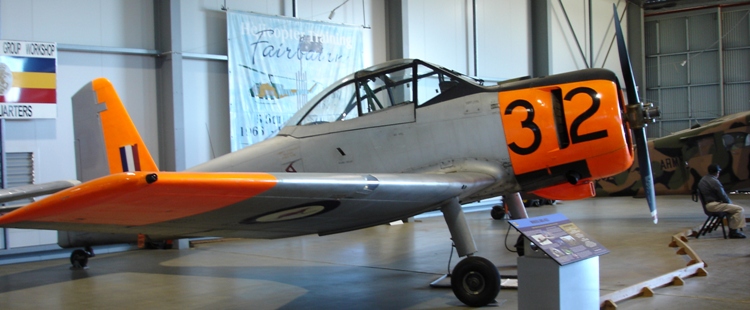
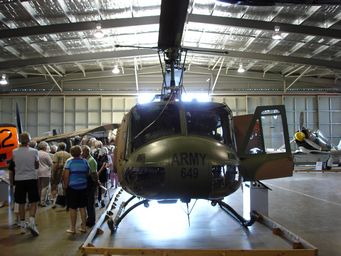
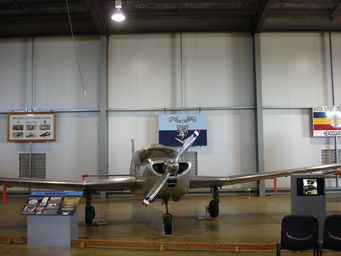
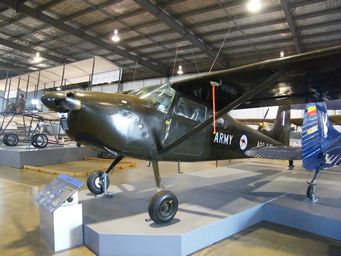
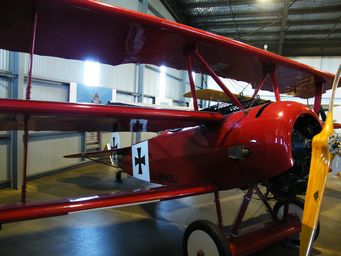
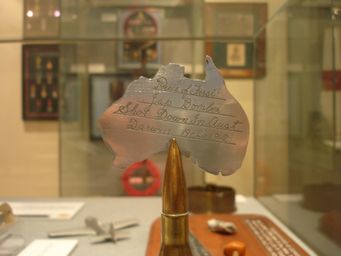
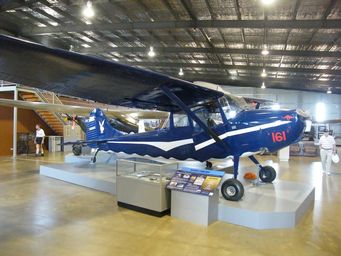
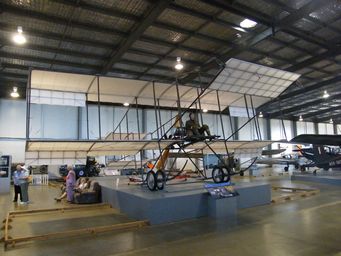
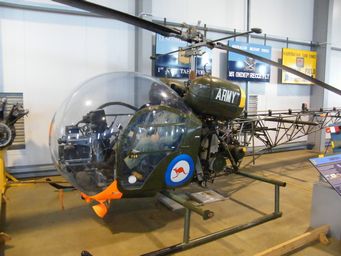
Winjeel A85-432
By 1948, the Australian aircraft manufacturer, Commonwealth Aircraft Company (CAC) had already had successes
including the Wirraway fighter/trainer and the Boomerang fighter.
The Royal Australian Air Force (RAAF) issued a design
requirement for a three seater trainer to replace both the Wirraway and the de Havilland Tiger Moth. CAC took up the challenge
and the first Winjeel prototype flew in February 1951. A further prototype was trialled in February 1955.
Winjeel was
chosen from the Aboriginal word for young eagle. Winjeel served as a basic trainer until 1994 after nearly forty years.
A visit to the Museum of Australian Army Flying will take you back in time to see how “Those Magnificent Men in Their Flying Machines”
progressed from the Boxkite to present day.
The Museum’s memorabilia includes aircraft, engines, uniforms, history of the
Oakey Airfield, photographs and memoirs of Army Aviation servicemen.
From 1912 to 1921 the Australian Army had the Australian
Flying Corp. In 1921 the RAAF was established to take over the flying roles from the Army. During the 1950s, the
Australian Army again entered military aviation flying reconnaissance work during the Korean War. Then in 1959 and
1960 Cessna 1800s and Bell 47 helicopters became the first Army owned and operated aircraft since 1921.
In 1968 the Oakey airfield
was acquired from the Department of Civil Aviation to be developed by the Department of the Army as a permanent base for Army Aviation,
becoming fully operational by 1973.
Bristol Boxkite (replica)
The Bristol Boxkite was the first aircraft produced by the British and Colonial Aeroplane Company in
1912. The Boxkite was used at the first Australian air base at Point Cook, Victoria, as a training plane. It is like a
large Ultralite. This replica boxkite holds pride of place as you enter the displays in the Oakey Museum.
In 2014,
a replica Boxkite was flown at an air display at Point Cook, to celebrate the centenary of the Boxkite in Australia.
The Bird Dog history covers 47 years of service. The Americans had large numbers of Bird Dogs in South Vietnam and one was on
loan to 161 Recce during that period. RAAF Forward Air Controllers also flew the Bird Dog. Several Bird Dogs are believed
to be still flying.
The L-19 received the name Bird Dog as a result of a contest held with Cessna employees
to name the aircraft. The winning entry, submitted by Jack A. Swayze, an industrial photographer, was selected by a U.S. Army board. The name was chosen because the role of the army's new aircraft was to find the enemy and orbit overhead until artillery (or
attack aircraft) could be brought to bear on the enemy. While flying low and close to the battlefield, the pilot would observe the
exploding shells and adjust the fire via his radios, in the manner of a bird dog (gun dog) used by game hunters.
The U.S. Army
awarded a contract to Cessna for 418 of the aircraft, which was designated the L-19A Bird Dog. The prototype Cessna 305 (registration
N41694) first flew on 14 December 1949.
In 1962, the Army L-19 and Marine Corps OE-1 was redesignated the O-1 (Observation) Bird
Dog and entered the war in Vietnam.
"Bunny II" is an aircraft which was built by members of 161 (Independent) Reconnaissance
Flight from "bits and pieces". The project started in August 1970 and was completed on 9 May 1971 when the aircraft was test flown
by Charlie Brewster. The original fuselage and "bits and pieces" which became Bunny II was recovered from a graveyard at Vung Tau
by Charlie Miller. The aircraft was shipped to Australia in 1971 and trucked to the Army Aviation Base at Oakey, Queensland. The aircraft
has been flown on a number of occasions but it is now on static display at the Museum of Australian Army Flying at Oakey.
Cessna 180
Only seven Cessna 180s were deployed to South Vietnam for operational service with 161 Recce Flt from September 1965
until February 1971.
Fokker Dr 1 Triplane
The Fokker Dr.I (Dr for "Driedecker" meaning triplane) was a German World War I fighter aircraft
built by Fokker-Flugzeugwerke. The Fokker Dr.I saw widespread service in the spring of 1918. It became famous as the aircraft in which
Manfred von Richthofen (The Red Baron) gained his last 19 of his 80 victories, and in which he was killed on 21 April 1918. FromWikipedia.
First flown in 1917, Fokker Triplanes saw widespread service in the spring of 1918. A total of 320 Fokker
Dr 1 triplanes were built during World War I.
Bell 47G3 B1 (Sioux)
The Bell 47G light observation helicopter was the first helicopter to enter Australian Army Service.
Thirty Seven Bell 47G3B1 Sioux Helicopters were sent to in South Vietnam with 161 Recce Flight and 161 (Indep) Recce Flt during
the period of September 1965 and September 1971.
UH-1 Iriquois
The first combat operation of the Bell UH-1 Iriquois was in the service of the U.S. Army during the Vietnam War. The original designation of HU-1 led to the helicopter's nickname of Huey in September 1962, the designation was changed to UH-1, but "Huey" remained in common use. Approximately 7,000 UH-1 aircraft saw service in Vietnam.
From Wikipedia.
A piece of the first Japanese bomber shot down in Australia, in Darwin 19 February 1942 is on display in a room filled with newspaper
clippings and memorabillia.
See the full list of aircraft on display at Oakey Museum of Australian Army Flying on Aviation Museum
Were spitfires crated and buried at Oakey and the end of World War II? Read about the rumours on Broken Wings.
Southern Cross SC1
Cessna 0-1 Bird Dog
The Cessna “Bird Dog” was a United States plane, but Australian Army pilots did fly these in Vietnam. Bunny II, the Cessna on display is a composite, reconstructed with parts from several planes and has been flown several times.
CAC Boomerang
The Commonwealth Aircraft Corporation Boomerang aircraft is significant as the first combat aircraft designed
and built in Australia. The Boomerang was a World War II fighter aircraft designed and manufactured in Australia between 1942
and 1945. This was a single seater fighter plane, along the lines of the British Spitfire and US Kitthawk.